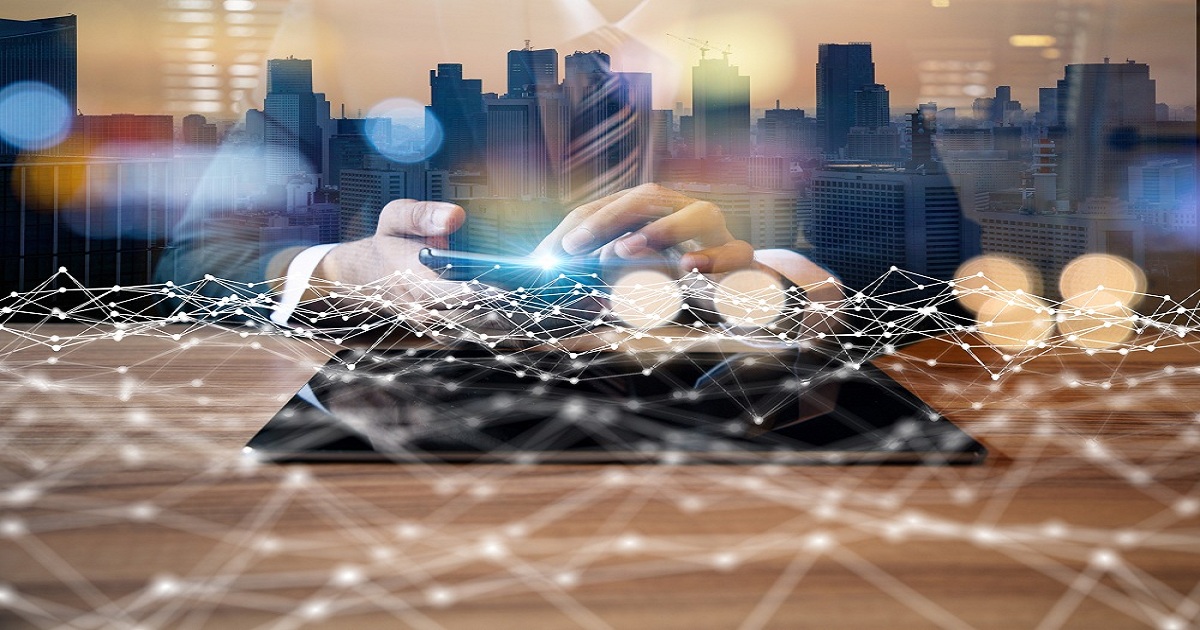
IoT Security
Article | June 28, 2023
The evolution of internet-based market models has changed the way businesses operate. Present-day businesses know that data visualization in business intelligence is integral to competitive success. Therefore, businesses are now expanding their data and intelligence retrieval capacities. As a result, IoT (Internet of Things) data visualization is gaining popularity among industrialists and researchers across various disciplines.
In corporate finance, IoT-based efficient data visualization analyses data from multiple sources with the help of corporate analytics management tools and manages data quality for business intelligence to reduce the risk of leaks.
Impact of IoT Data Visualization on Corporate Finance BI
Data is everywhere— right from a customer's first visit to your company’s website until he signs out, all the behavioral patterns and data are tracked. All this data becomes useless unless it is utilized for a particular purpose.
Analyzing this data to predict future trends is one of the significant benefits of smart data visualization tools and technologies. It helps to slice and dice the data gained from different sources of different complexity levels to the minute granular level. Business intelligence utilizes these insights and the existing database to run risk analysis.
It gives an overview of your financial performance and the risks and exposures it faces. And if you switch the KPIs at the center of any dashboard, your entire team can instantly access the most important and relevant data.
IoT data visualization can measure big data on customers more efficiently, allowing organizations to add value to their customers. Customized tools will analyze your customers’ data and produce reports according to specific customer needs to help you get a deeper insight. Corporations can also utilize this data to better understand their competitors’ benchmarks.
Customizable IoT Data to Store Millions of Data Points in One Place
IoT collects millions of data from various complex sources. The data visualization dashboard contains multiple widgets that convert this data into various forms, such as line graphs, geographical maps, bar charts, pie charts, gauges, heat maps, etc.
This information, transmitted into multiple visualizations, helps organizations to unlock every piece of data into a valuable asset.
The Benefits of Using IoT Data Visualization
Businesses can collect, analyze and monitor a variety of data using IoT, such as internet usage data, video surveillance data, mobile app usage, and social media. It helps businesses to design products and provide personalized value-added services to drive better consumer engagement. Here are some key benefits IoT data visualization offers:
Unlock multiple insights across various verticals
Addressing important financial concerns proactively
Combination of multiple data sources into a single insightful dashboard
Multi-layered visual data.
Combines new data with the existing data to analyze new business opportunities.
Better performance on IoT data flow.
Analyze multiple data correlations in real-time
Improved Collaboration
Well-coordinated and efficient performance.
Cost reduction
Accurate data interpretation
Mitigate risk factor
Better decision making
Conclusion
Hands down, IoT data visualization intelligence in a company’s business operations will lead to better decision-making. But, before you choose an IoT data visualization tool for your business, you should know what kind of data you need to analyze and if you need any additional historical data. Because IoT services offer data visualization tools and techniques to analyze and monitor the data accordingly to predict future trends. So, it’s important to identify the goals before selecting a tool for your organization.
Read More

IoT Security
Article | July 17, 2023
Manufacturing industry or the Industrial Internet of Things has been one of the driving verticals for development of 5G technologies. Wide 5G deployement for Industrial IoT has long been in the pipeline but we might expect it to be a reality very soon.
The true success of 5G depends on the verticals as trends suggest that that Industrial IoT alone will triple the number of needed base stations globally. And many verticals will need efficient wireless connectivity to become successful. 5G has features that are specifically designed to address the needs of vertical sectors, such as network slicing and URLLC. The ultra-reliable low latency communications and massive machine type communications required by the IIoT will soon be realized.
Table of Contents:
How Will 5G Impact Industrial IoT?
5G Accelerations for IIoT
Industrial 5G
How Will 5G Benefit Industrial IoT?
IoT is a B2B application and users just want to get actionable data from their sensors and not worry about whether it’s old data or unreliable data. I think 5G changes this dynamic significantly over the long term by standardizing and simplifying the experience and interactions, and possibly engaging more of the industry to help solve IoT’s problems but also improve the total experience.
- Anshel Sag, analyst at Moor Insights & Strategy
• Data-Transfer Speeds
Any IoT is said to be commercially successful depending on how fast it can set up communications with other IoT devices, software based websites or applications, phones, and tablets. 5G promises exactly all of this with significant increase in transfer speeds.
5G is 10x faster than its LTE counterparts and allows IoT devices to communicate and share data faster than ever. All IoT devices will benefit from the faster speed of 5G with reduced lag and improved sending and receiving of data and notifications between connected devices.
• Greater Network Reliability
5G networks also offer more reliable and stable connection which is extremely important for any IoT including devices like locks, security cameras and monitoring systems that depend on real-time updates.
With reliable connectivity consumers will be the greater beneficiary.
It is however, imperative for manufactures to trust and invest in 5G compatible devices to reap the benefits of high-speed connectivity, very low latency, and a greater coverage that will arrive with the next generation network.
READ MORE:How Will the Emergence of 5G Affect Federated Learning?
5G Accelerations for IIoT
• Diversity in Industrial IoT
The opportunities that industrial IoT bring with is varied and its used cases span the spectrum from indoor to outdoor, less demanding to mission-critical, data rate from dozens of bps to gbps, device motion from fixed to mobility, and power source from button battery to high voltage.
Predictive maintenance, smart metering, asset tracking, and fleet management are some of the commonly known opportunities for IIoT, which be extended further by 5G through continued diversity and expansion.
• 5G Inspires Untapped Frontiers
Industrial IoT application areas such as mobile robot control in production automation and autonomous vehicles in open pit mining require wide mobility, low latency and mission-critical reliability. They rely on wireless access at 50ms to 1ms latency and service reliability from 5 nines to 6 nines.
Though 4G/LTE has attempted to address these areas of IIoT application it has failed due to unsatisfactory performance. With ultra-reliable and low latency connection, 5G will take industrial IoT to unconquered spaces.
• Managing the Enterprise 5G Network
Typically, enterprise IT is responding to the business demand from Operational Technology (OT) and mandates security, integration, visibility, control, and compatibility. In this scenario, 5G is not about “what,” but about “how”. IT needs to consider the right approach to bring 5G to the enterprise and decide whether to co-manage with the service provider (SP) or self-manage. The experience of IT in managing Industrial Ethernet and Wi-Fi may not hold when it comes to 5G. IT will likely require OT’s partnership to address complexity, security, integration, and other new challenges that 5G presents.
Industrial 5G
The potential for industrial 5G huge as it enables whole new business models.
Industrial IoT has a core requirement of the ability to connect sensors, devices, software applications, production process, workers and consumers. The connectivity requires to be seamless vertical and horizontal integrations of all layers of automation pyramids that increases operational efficiency of the plant floor and the supply chain by optimal use of data, information and analytics. This can be improved by five key elements:
• Improved Connectivity
• Availability
• Low Latency
• Flexibility
• Speed
Industrial 5G will impact these areas of the manufacturing industry to guide the success of Industrial IoT.
Industrial 5G will play a key role in helping industrial users achieve the goals of Industrial IoT. 5G offers wireless communications services with reduced latency, increased connection density, and improved flexibility compared to the current 4G generation. 5G technology has a theoretical downlink peak speed of 20 Gbps (gigabits per second), which is about 20 times faster than the current generation.
The key is to start building IoT devices with broadly adopted operating systems, built-in security all the way down to the silicon, verifiable and updatable firmware, and mainstream application development tooling.
- Anshel Sag, analyst at Moor Insights & Strategy
The push and pull in achieving 5G success in IoT will be there until technology providers and end users work together to set up a consensus on standardization. The success will also depend on best-of-breed approach allowing the introduction of new technology over the lifecycle. Software and system integration will also be important attributes to a successful 5G deployment.
READ MORE:How Will IoT Revolutionize Pharmaceutical Manufacturing?
Read More

Enterprise Iot
Article | July 20, 2023
Edge computing enables the IoT to move intelligence out to the edge. If organizations have a lot of data and need to use it, they should do so in end-to-end paths, environments with lots of sensors, or environments where a lot of data is generated at the edge, thanks to the Internet of Things (IoT) and edge data sensing. Additionally, traditional methodologies fall short of the necessary standards when dealing with real-time information and the growing amount of unstructured data, which includes a sensor and IoT data. For management, power concerns, analytics, real-time needs, and other IoT situations, speed and high-speed data are essential elements. This enables edge computing to handle data.
The Internet of Things (IoT) benefits from having compute capacity close to the location of a physical device or data source. IoT device data needs to be processed at the edge rather than traveling back to a central site before that analysis can be done in order to react quickly or prevent concerns. For the data processing and storage requirements of IoT devices, edge computing serves as a local source.
Benefits of Using IoT and Edge Together
The connection between IoT devices and the main IT networks has less latency.
Greater operational efficiency and quicker response times.
Network bandwidth improvement.
When a network connection is lost, the system continues to run offline.
Utilizing analytics algorithms and machine learning, local data processing, aggregation, and quick decision-making are possible.
Industrial IoT, often known as IIoT, is the application of IoT in an industrial setting, such as factory machinery. Consider the lifespan of the large, factory-used machinery. Equipment may be stressed differently over time depending on the user, and malfunctions are a regular aspect of operations.
The parts of the machinery that are most prone to damage or misuse can be equipped with IoT sensors. Predictive maintenance can be performed using the data from these sensors, cutting down on overall downtime.
Because IoT devices can be used as Edge Computing, the line between IoT and Edge Computing can occasionally be razor-thin. However, the most significant difference is the ability not only to compute data locally (in real-time) but also to sync that data to a centralized server at a time when it is safe—and feasible—to send.
IoT and edge computing are both here to stay since they fulfill crucial societal and commercial needs.
Read More

Industrial IoT
Article | July 20, 2022
IoT use cases span a variety of sectors and businesses. A typical Internet of Things (IoT) solution consists of a large number of heterogeneous IoT devices with sensors that generate data in a variety of formats at varying rates, which is then processed and analyzed to derive insights. In addition, IoT devices can connect to a network directly or through a gateway device, allowing them to communicate with one another and with cloud services and applications.
Create a layered architecture
An organization's IoT solution's architecture outlines its overall layout, including its physical components (such as sensors and actuators) and virtual components (like services and communication protocols). IoT system complexity can be managed by utilizing a modular strategy that divides the architecture into several layers and focuses on each tier separately.
IoT architectures have a tendency to outsource work to the edges of IoT networks (where the physical devices connect to the cloud). This aids data-driven IoT applications by lowering latency, enhancing privacy, and lowering bandwidth costs.
Devices layer
The device layer components include physical sensors and actuators that link to IoT devices and the IoT devices themselves. Although sensors and actuators are often not considered "smart" devices, they frequently connect to the architectural elements with higher computing power, either directly or indirectly (with the aid of gateway devices).
These devices often use over-the-wire protocols like Ethernet or wireless protocols like Bluetooth, Zigbee, WiFi, LTE, or RFID to transmit data.
Edge layer
The analytics and pre-processing services that are offered at the network's edge are included in the concept of the edge layer. This layer acts as a central integration point for subsequent layers (devices layer). For the upstream layers, it offers routing and device control features. In addition, this layer can be connected to pub-sub systems to convey events and listen in on them.
The size and heterogeneity of the devices and connectivity involved make designing data-driven IoT solutions hard. This article discusses some techniques for creating safe, adaptable, and scalable IoT architectures.
Read More